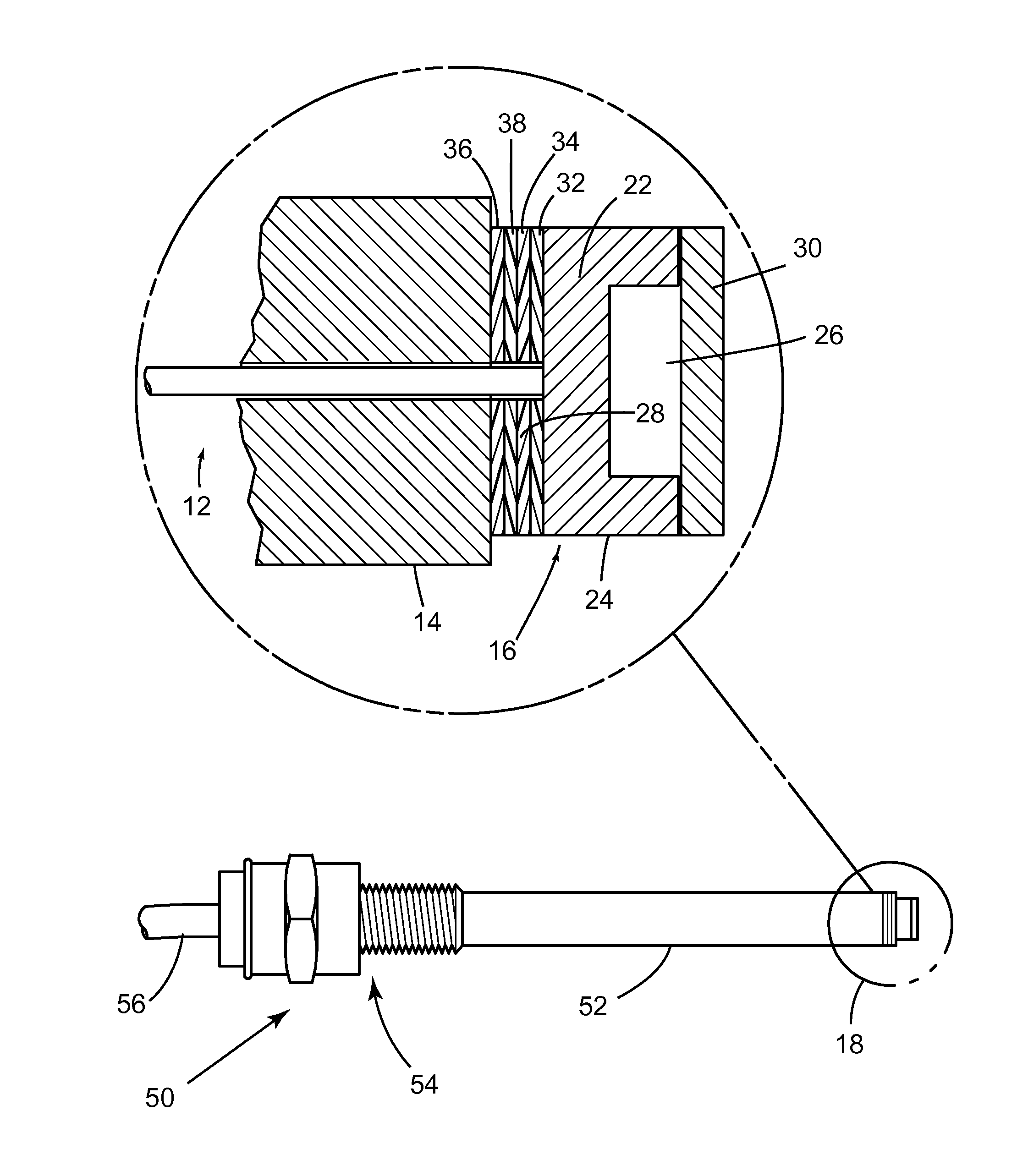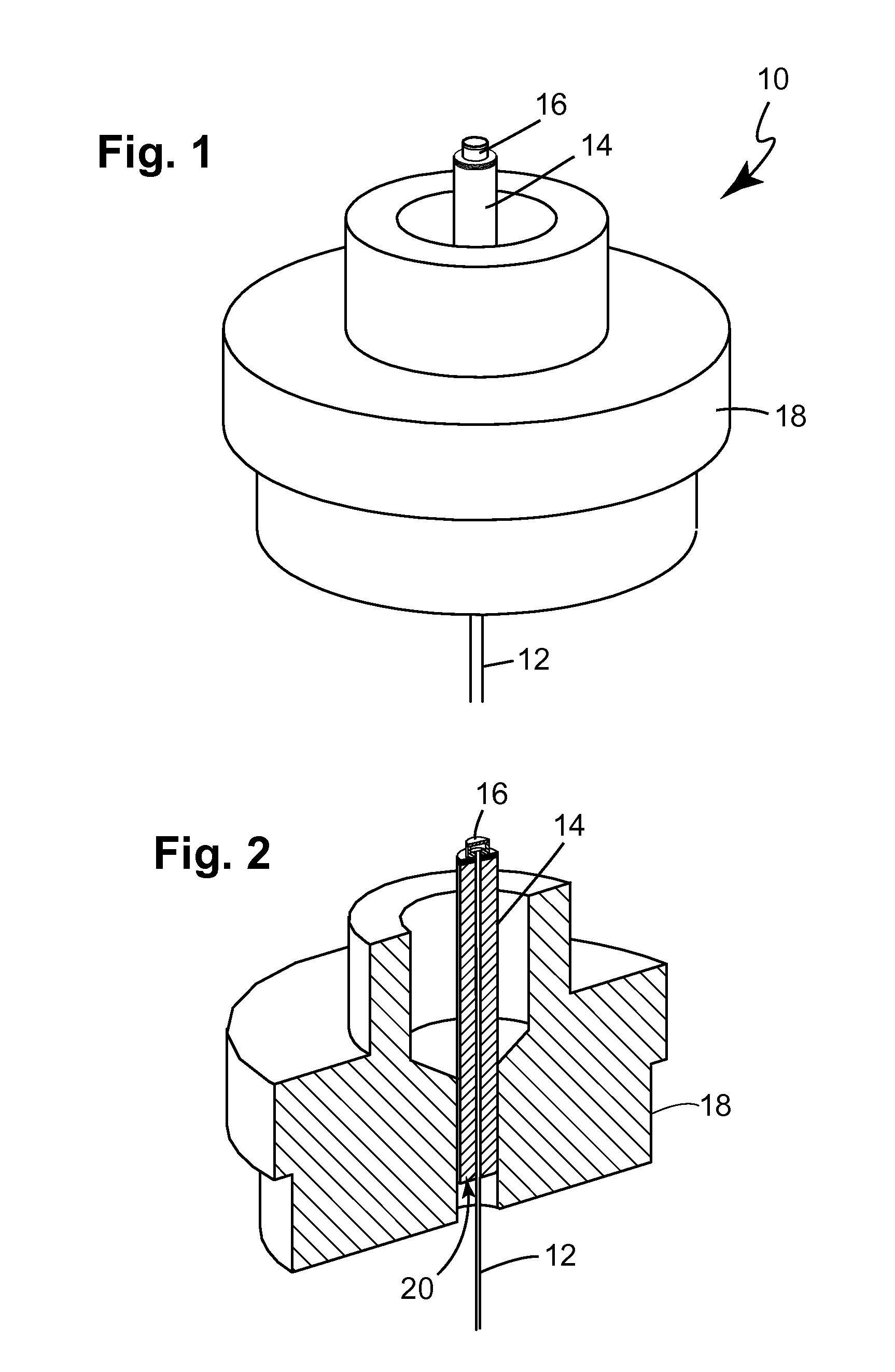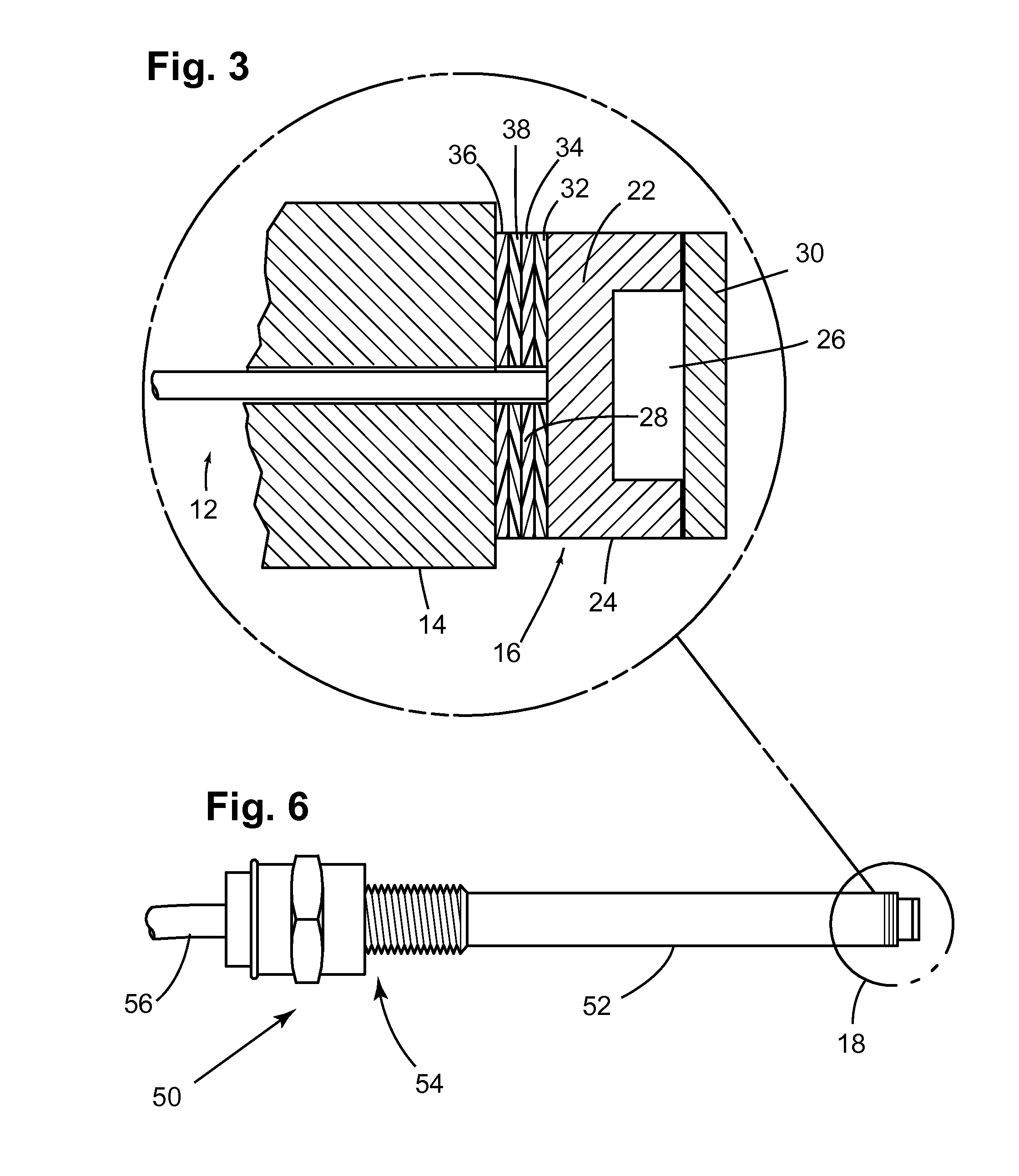High-temperature pressure sensor and method of assembly
a high-temperature pressure sensor and high-temperature technology, applied in the field of sensors, can solve the problems of difficult proper use of electrical pressure probes such as piezoelectric sensors, limited piezoelectric pressure transducers, and inability to locate signal amplification electronics near the sensing element in these harsh environments
- Summary
- Abstract
- Description
- Claims
- Application Information
AI Technical Summary
Problems solved by technology
Method used
Image
Examples
example 1
[0038]Based on the procedures summarized hereinabove in accordance to the disclosed invention, a pressure sensor as illustrated in FIGS. 1-5 was produced and tested. First, a Kovar ferrule subassembly was brazed to a stainless steel collar by first making one toroid out of a 15-mil Palcusil-10 wire with an inside diameter of about 0.043 in and subsequently sanding the entrance end of the ferrule and 10 mils from the end with a 400-grit paper to remove Ni / Au finish around the top of the countersink, thus preventing braze from wicking into the entrance hole. The ferrule was then placed into the drilled hole with the counter sink end leading into the collar and a braze ring was placed over the ferrule and pressed them into the gap between the strain relief and the collar hole, the resulting assembly being brazed at 860° C. for 5 minutes at temperature in a hydrogen atmosphere and leak tested.
[0039]In order to metallize the end of the ferrule proximal to the die, the brazed collar fixtu...
example 2
[0043]Based on the procedures summarized hereinabove in accordance to the disclosed invention, a pressure sensor as illustrated in FIGS. 7 was produced and tested. The steps of ferrule-to-collar braze, ferrule metallization, die-to-ferrule thermo-compression bonding, laser-welding assembly, and final assembly are similar to the ones disclosed with Example 1 and will not be repeated here.
[0044]In attaching the optical fiber cable, a glass bead was disposed on a metal-coated optical fiber a position about 3 in from the end thereof and the excess fiber was coiled up and placed onto a setter tile. The glass bead was molten by placing the setter tile into a furnace and heating the same in nitrogen atmosphere. The bead length in this particular example measured approximately 1.0 mm in length. A bath of ferric chloride solution was then prepared in a quantity proportional to 4 oz of ferric chloride to 16 oz of water and heated to 80° C. with constant stirring. Next, electroplating tape was...
PUM
| Property | Measurement | Unit |
|---|---|---|
| peak temperatures | aaaaa | aaaaa |
| width | aaaaa | aaaaa |
| height | aaaaa | aaaaa |
Abstract
Description
Claims
Application Information
 Login to View More
Login to View More - R&D
- Intellectual Property
- Life Sciences
- Materials
- Tech Scout
- Unparalleled Data Quality
- Higher Quality Content
- 60% Fewer Hallucinations
Browse by: Latest US Patents, China's latest patents, Technical Efficacy Thesaurus, Application Domain, Technology Topic, Popular Technical Reports.
© 2025 PatSnap. All rights reserved.Legal|Privacy policy|Modern Slavery Act Transparency Statement|Sitemap|About US| Contact US: help@patsnap.com



